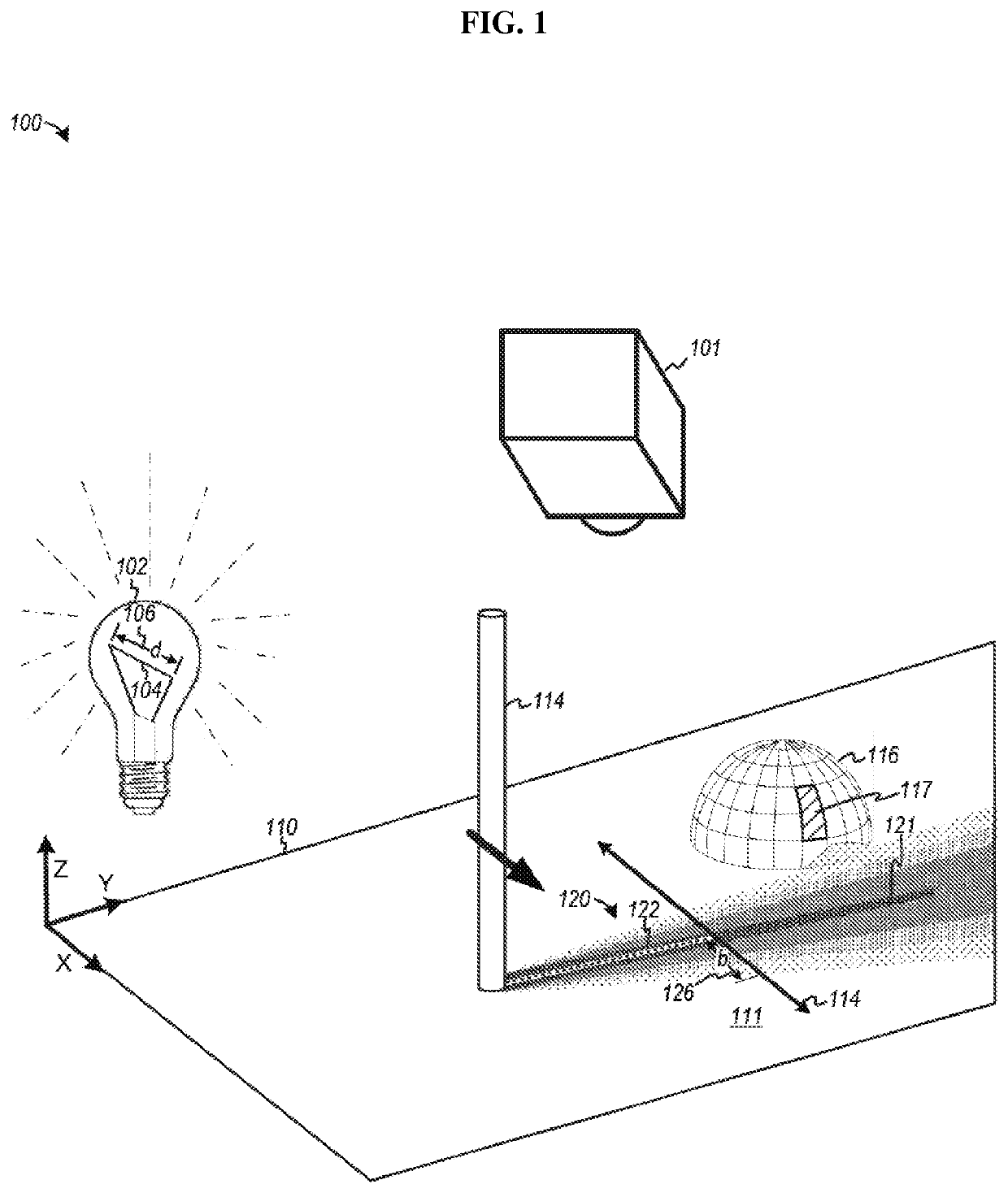Generation of one or more edges of luminosity to form three-dimensional models of objects
a technology of luminosity and edges, applied in the field of scanning devices, can solve the problems of not being well suited to apply to a wide range of applications, scanners are expensive, and the diagram system b>100/b> may not be well suited to model 3d imagery for three-dimensional objects
- Summary
- Abstract
- Description
- Claims
- Application Information
AI Technical Summary
Benefits of technology
Problems solved by technology
Method used
Image
Examples
Embodiment Construction
[0101]For the purpose of illustration, the present invention is shown in the preferred embodiments of apparatuses, methods, and systems, for generating one or more edges of luminosity to form three-dimensional models of objects or environments. In broad embodiment, the present invention comprises one or more light sources and one or more shadow casters, which generate one or more edges of luminosity across objects or areas being modeled, one or more means of detecting the one or more edges of luminosity, a means of moving the one or more edges of luminosity relative to the objects or areas being modeled, and a means of generating three-dimensional models of the objects or areas being modeled, as well as related methods and systems. Some embodiments move the one or more shadow casters, some embodiments move the one or more light sources, and some embodiments move the object through the one or more edges of luminosity. Various embodiments or examples may be implemented in numerous way...
PUM
| Property | Measurement | Unit |
|---|---|---|
| diameter | aaaaa | aaaaa |
| width | aaaaa | aaaaa |
| diameter | aaaaa | aaaaa |
Abstract
Description
Claims
Application Information
 Login to View More
Login to View More - R&D
- Intellectual Property
- Life Sciences
- Materials
- Tech Scout
- Unparalleled Data Quality
- Higher Quality Content
- 60% Fewer Hallucinations
Browse by: Latest US Patents, China's latest patents, Technical Efficacy Thesaurus, Application Domain, Technology Topic, Popular Technical Reports.
© 2025 PatSnap. All rights reserved.Legal|Privacy policy|Modern Slavery Act Transparency Statement|Sitemap|About US| Contact US: help@patsnap.com



